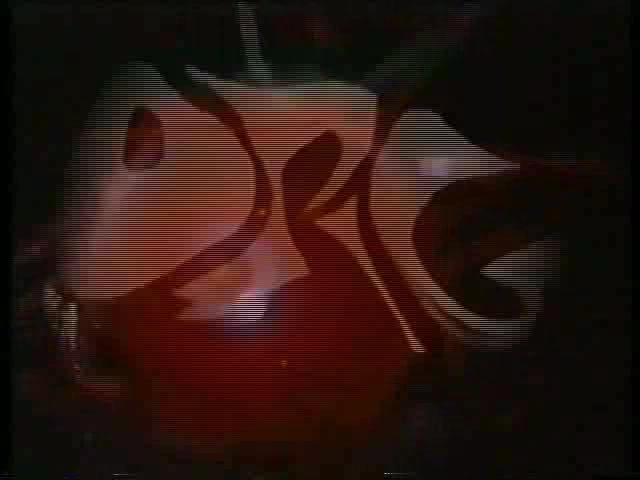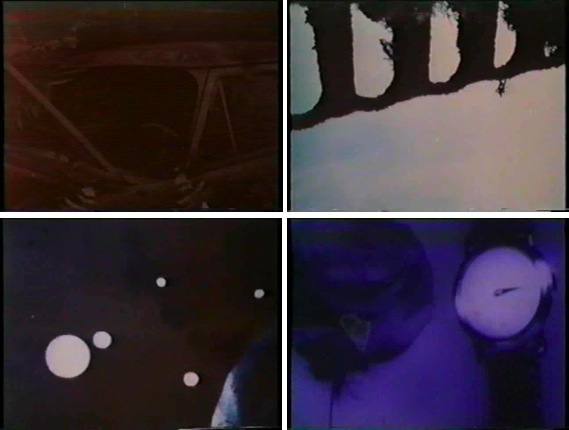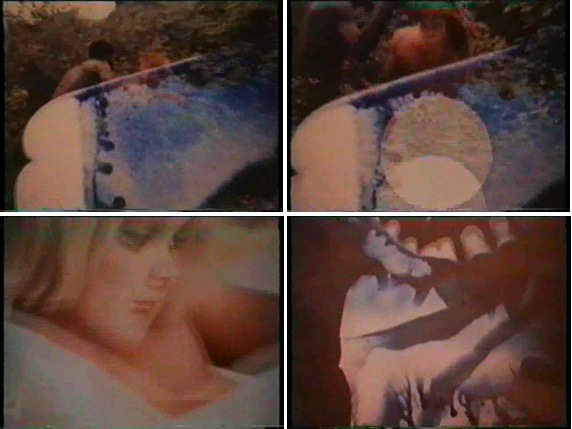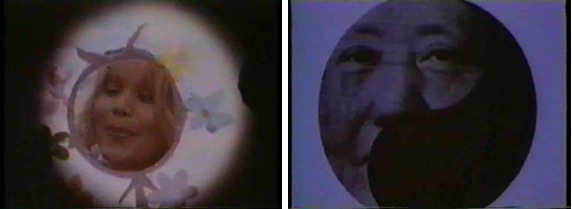Fernando Birri, ORG
ORG
FERMAGHORG (Fernando Birri), Italien, 1967-78,
Farbe, 35 mm, 177 Minuten
Produktion: Terence Hill
Regie-Assistent: Settimio Presutto
Drehbuch: Fermaghorg
Kamera: Mario Masini, Ugo Piccone, Mario Vulpiani, Huston Simmons, Cesare Ferzi
Ton: Sergio Pagoni; Fermaghorg
Schnitt: Fermaghorg, Paolo Zamattio, Guiliano Presutto
Musik: Enrico Rava
Spezialeffekte: Fermaghorg, Cesare Ferzi, Carmen Papio Birri
Darsteller: Terence Hill, Lidja Juraçik, Isaac Tweg Obu, Nolika Pereda

Ich bin sehr gespannt aufs Angucken von Fernando Birris ORG. Am Mittwoch, 14. März, 19.30 Uhr, wird er im Arsenal 2 gezeigt, seit der letzten Vorführung 1991 sind 21 Jahre vergangen. Gezeigt wird er nun im Rahmen des Living Archive Projekts. Der Eintritt ist frei. Es gibt eine kleine Einführung, und weil der Film zum großen Teil auf italienisch ist und es auch nur italienische Untertitel für die spanischen, englischen, französischen Passagen hat, werden während der Vorführung dezent kursorische Übersetzungen ins Deutsche eingesprochen, live.


Es gibt in dem Film 26.625 Schnitte, die man im Verhältnis sehen muss zu einem üblichen Film. In einem üblichen Film wird zwischen 800 und 1.400 Mal geschnitten. Das Motto des Films stammt von William Blake: „The road of excess leads to the palace of wisdom“.
Der Film hat einen vagen Plot um eine Dreiecksgeschichte. Der beruht auf einer Erzählung von Thomas Mann, 1936 in Stockholm geschrieben, 1940 zuerst veröffentlicht, Die vertauschten Köpfe – Eine indische Legende. Die wiederum beruht auf einer indischen Legende, die Mann ziemlich weischweifend ausschmückt. Doch auch bennent er schon auf den ersten Seiten ihre psychosozialen Bestandteile:
„Die Freundschaft der beiden beruhte auf der Unterschiedlichkeit ihrer Ich- und Mein-Gefühle, von denen die des einen nach denen des anderen trachteten. Einkörperung schafft Vereinzelung, Vereinzelung schafft Verschiedenheit, Verschiedenheit schafft Vergleichung, Vergleichung schafft Unruhe, Unruhe schafft Verwunderung, Verwunderung schafft Bewunderung, Bewunderung aber Verlangen nach Austausch und Vereinigung. Eitaid vai tad. Dieses ist das. Und auf die Jugend zumal trifft die Lehre zu, wenn der Ton des Lebens noch weich ist und die Ich- und Mein-Gefühle noch nicht erstarrt sind in der Zersplitterung des Einen.“


Auf den Film bin ich vor einiger Zeit per Zufall gestoßen, vielleicht wegen dieses neugierigmachenden Texts bei mubi; ich weiß es aber nicht mehr genau. Eine rumpelige digitale Kopie einer VHS mit der 2-Stunden-Fasssung schwirrt im Internet umher (im Arsenal ist die Originalfassung zu sehen, 177 Minuten).
Von der digitalen VHS-Kopie schaute ich ein paar Minuten, überflog weitere, setzte später wieder ein, „spulte vor“, schaute, „spulte vor“, schaute. Staunte. Das, was ich sah, kickte sehr. Die Screenshots hier stammen übrigens aus den ersten zehn Minuten dieser VHS-Kopie. Doch allein das Kompressive des Kinos scheint mir der richtige Ort für ORG. Als Kino-Erweiterer sah Birri das damals anders, den Film schickte er als non-film in die Welt, und für die Uraufführung 1979 in Venedig traf er entsprechende Maßnahmen:
„I constructed a large screen in front of the door of the cinema. This was never intended to be projected in a movie house but as part of something else, part of a happening, what today you would call an installation. So I install this giant screen before the entrance of the cinema and, with a large knife I’d picked up in India, at three o’clock sharp I climb a ladder and begin to cut away at the screen, tearing it open, so that the audience came through the screen. The audience was the backdrop for the film. Rather than situating the viewer in front of the screen as an active spectator, one who leaves no different than when he came to see it, I intended the viewer to enter the film …“
Das Zitat stammt aus einem Vortrag, den Birri 1994 in der Escuela Internacional de Cine y Televisión hielt, eine kubanische Filmschule, die er 1986 zusammen mit Gabriel Garcia Marquez und Julio Garcia Espinosa gründete. Der Vortrag ist auf spanisch, diese englische Übersetzung fand ich in einer cinephilen Tauschbörse beim Suchen nach Informationen über Birri. Ich wusste vorher eigentlich nichts über ihn, was beschämend ist, einerseits für mich, andererseits für den Diskurs übers Kino hier, in dem jemand wie Birri so schnell abseitig wird. Auf der Website von Volker Pade findet man einen guten ersten Überblick. 2010 gab es einen Kongress in Innsbruck, Anfang der 90er erschien ein Buch, das ich noch nicht kenne – Groschup, Helmut/Wurm, Renate (Hg.), Fernando Birri. Kino der Befreiung, Innsbruck 1991 (Südwind Verlag).
Kommenden Dienstag wird Birri 87 Jahre alt.
Geburt in Argentinien am 13. März 1925 in Santa Fé de la Veracruz; 1950-52, Italien, Filmausbildung in Rom, Kontakte zu Neorealisten; 1956 Rückkehr nach Argentinien, Gründung einer Dokumentafilmschule, 1958 Tire Diè (ein kollaborativer Dokumentarfilm, the First Latin American Social Survey Film); 1961 der Spielfilm Los Inundados; 1963, nach dem Miliärputsch, Exil in Italien, dort, von 1968-78 ORG; 1982, Venezuela, Gründung des Laboratorio de Poéticas Cinematográficas, eine „fliegende Filmschule“; 1984 der Dokumentarfilm Remitente Nicarague – Carta Al Mundo; 1985 Mi Hijo El Che; 1986 Direktor der o.g. Filmschule in Kuba; 1988 die Verfilmung von García Márquez‘ Un Señor Muy Viejo Con Unas Alas Enormes; 1997 der Dokumentarfilm Ché – Muerte De La Utopia?; 1997 El Sieglo Del Viento. Zwischendurch und anscheinend immer noch Lehrtätigkeit in Süd-, Mittel- und Nordamerika.


*
Hier noch für ihre Unterlagen und zur Vorbereitung auf Mittwoch ein paar Zitate (u.a. mit einer Kurzzusammenfassung des Plots im dritten Absatz) aus dem Vortrag Birris über ORG, von 1994, aus dem Spanischen von depositio. Am Schluss finden sich Auszüge aus Birris 1978 oder 79 verfassten Manifest zu dem Film:
(…) It starts with this name, ORG, which can function as a prefix or a suffix. ORG generates organ, orgasm, orgy as well as Amorgos, for example. Search for the word that you want. In the course of the film, the word becomes intertwined with the Orgone theory of Wilhelm Reich. It is precisely to him that the film is dedicated along with two other names: Che and Méliès. … Putting these three names together is like mixing oil and vinegar, salt and sugar, Yin and Yang, traditional and conservative culture. In this schizophrenic and ecstatic mixture, contradictory elements remain separate and grow ever more opposed. This was an attempt made with the film to respond to the old concept of „harmony in discord“ which is usually taken to imply that contradictions have been overcome.
The film first took shape in the crucial year of 1968: Che had died in 1967 in Bolivia, man was about to reach the moon and his ego had shifted. What was happening in the human psyche seemed to me to be like what happened when the Ptolemaic was replaced by the Copernican world system. At that time the human ego, or its sentiments, was loosing its centeredness. An ego-cosmocentric conception of the human was also being breached. The film suffers all the tensions and ruptures of these contradictions which are, in truth, only psuedocontradictions. It advances a critique of the concepts of the left of that time from a man who, naturally, has also lived or tried to live in solidarity with the left.
(…)
The synopsis of the film, or non-film, I’ll read as it appeared in the press-kit: „Some years after the explosion of a mushroom cloud, a black man named Grrrr helps his white friend Zohommm to seduce his beloved Shuick in a love triangle. When Zohommm later becomes jealous, he consults an electronic Sybil about his woman and friend. She confirms his suspicions and, in despair, he cuts off his head. Grrrr, his black friend, finds him dead and also kills himself. When the woman Shuick discovers them, she tries to jump off a cliff, but is stopped by the electronic Sybil, who brings the two friends back to life. Shuick reunites with the two men, but their heads have been transposed, swapped (by mistake or not?) and a dispute arises between the two bodies to decide who will now get the woman. Is a man his head or his sex? This little question, the film leaves open.“
(…)
The film took ten years, eight months and fourteen days to complete. Here are some of the mantras of the film, which I used in the programs. Reading: „rigor and madness go hand in hand“, „image magic“,“micro-utopia“, „narrative flash“ (English in original),“filmunculus“, „once upon a time“, “ imagófagos“ (eaters of images), and, here it says „an ideological fable for polymorphous perverse adults.“ These provide some indications of what I wanted to do in this experiment.
(…)
We were constantly improvising as we assembled the film. We’d decide to do something and try it out. If, after five minutes of editing, we saw that it wasn’t working we’d throw it out. Everything came down to gradually piecing together the scenes as they were and then re-piecing them together so that they proved otherwise. This is the idea I spoke of earlier: this non-film is secrete-ive. What do I mean by „secrete-ive“? It is a film that is done without calculation – as Neruda said about poetry, speaking of his own, all material is incorporated without deliberately excluding anything, without condoning anything. The film was a bit like a small snail, to used a simile, creeping forward, very slowly.
The film has two fundamental characteristics: it is a fiction film and it is an experimental film which explores the impossibility of fiction. I always cite as a reference for the film Cortazar’s Hopscotch, the novel structured so that it can be read in a multitude of different orders. Readers use it as they please and invent stories as they do so. In these early projections, we were attempting what was technically unimaginable then. You would have needed a Ferris wheel like the ones in public fairs to accommodate the reels that I wanted to see. This is what I mean by the concept of an open work that can be viewed as a whole and in fragments. You can get up to pee and come back or, as the case may be, not come back and see it. But isn’t that true of all films?
You’ve noticed my obsession with accompanying all my work with a manifesto, so I will read to you from the opening of the ORG manifest, which is the manifesto of coSmunismo, that is, the cosmic communism:
„For a cosmic cinema, delirious and lumpen.“
I was vigorously criticized for this statement on the grounds that it betrayed a serious contradiction within myself. In connection with Tire-dié and Los Inundados I had called for „a national cinema, realistic and critical“ and now I was pursuing this other thing. Quite honestly, for me there is no contradiction. Yesterday I called for a national cinema and in 1978 I called for a cosmic cinema. Before it was a realist cinema, now a delirious cinema. Before a critical cinema of the people and now a cinema of the lumpen. Ultimately, all I had done was to expand my coordinates. I reallocated my meridians and parallels of the terrestrial to celestial. Just that. Tire-diéand Los Inundados were part of my cycle of identity and this film is part (withRafael Alberti, Portrait of the Poet) of my cycle of internal exile.
The manifesto goes on:
„Erotic, visceral thinking, coSmunismo, communism cosmic and magical, for a cosmic cinema, lumpen and delirious that questions the filming and editing methods of our time. An experience that demonstrates how to put into practice the utopian, madness and rigor going hand-in-hand. There will be no lasting revolution without a revolution of language; tabula rasa wiped clean to experience ORG as a non-film, which is to say, as experience, not a mass audience, but the meeting of individual viewers, only for fools, questioning the methods of shooting and editing, as verification of a cinema for mutants and a total cinema – ORG experience as experience, communication of hope, Pythagorean editing techniques, „oracular“ and alchemical, seductive montage, entertaining new dimension of the mind, but the whole operation is a demonstration that we can implement utopia, not as a mass audience but as individual viewers, madness and rigor holding hands between film and non-film and beyond cinema. „Filmunculus,“ a film Roscharch test, ideologize everything, but also censor all, heir to the itinerant magic lantern showmen, to experience oneself as a response to the stimulus ORG. There will be no lasting revolution without a revolution in language, sensual communism, hedonistic, erotic, visceral thinking, coSmunismo, making a poem or a novel versus craft industry shock, cosmic and magical communism, for a cosmic cinema delirious and lumpen, involving film or non-film or paracinema, filmunculus questioning the methods of shooting and editing, audience not as mass, but as the meeting of individual viewers, Pythagorean and alchemical techniques, heir to the itinerant presenters of magic lanterns, magic cosmic communism, for a cosmic cinema, delirious and lumpen, communism sensual, hedonistic, erotic, visceral thinking, coSmunismo a film Roscharch test to ideologize everything and make the senses a tabula rasa, cinema from scratch, experience ORG, only for madmen, making poetry or a …“.
(…)
The issue of photography and cameras was resolved with seven cameras. The film had seven directors of photography using seven cameras from different nationalities. This is the opposite of what I had always done in my life. I’d always worked with a team of the same people. In this sense, it also violated that rule. There are landscape shots, home made special effects, many in-camera effects. In short, I did everything I had always been told could not be done. For example: you are not supposed to combine more than four tracks of sound because there is a thing called the white noise and beyond that we do not we hear anything. But let’s try, let’s listen. It all depends on how it is mounted. In ORG there are sound overlays where, through „premixes“, through a certain composition of the soundtrack, we hear as many as 999 tracks.
All films, even a delirious one, have a rigorous basis. This one was constructed on the Pythagorean bases of threes, sixes and nines. It’s a model, a support structure which is repeated everywhere, both in the image frames and the sound track. It would take too long to explain why these three numbers, as in the Pythagorean conception, and even moreso in the Kabbalistic conception, have a meaning specifically related to various cosmic forces.
(…)
The film was also distressed with nails, manipulated in all kinds of ways. It was spray painted. In the scene called „Camera Obscura“ there is a hidden autobiographical scene, a key to the film, in every way the film suffered, shall we say, what is typically prohibited it: it was trampled, spit upon, nailed, crucified, broken, pierced. By arrangement, in the basement of the SPES (Spes-Catalucci laboratory in Rome) we hung hundreds of meters of film from one column to another and collaborated with another great technician, Carlos Ventimiglia the Italian inventor of the pantograph doing all of these things. After selecting the fragments that were really important to us we went back to edit the scene into the film as its final scene, scene number 24, or „Camera Obscura“. But the moment it was mounted we decided it did not belong there, so that scene did not remain in the film. Instead, we used the material we had completed before this whole process of film-destruction, before this whole detour. We worked on this scene for nearly a year. You may wonder, but why? Why? I do not know if there is a reason, but I do know that there is a Brazilian expression that says: „O senhor se pasó de la raia“, or „Mister, it got out of hand.“ Fair enough?
(…)
The whole movie was a liberating experience, truly unique. For the first and last time in my life, I did everything I wanted, as I wanted to do it. That is, except for how it all came to an end, which was not expected. Speaking about this film as surplus, as a liberatory experience I have to ask myself, „liberating what? My answer would be, the Image in a specific sense. The visual and aural, in a global sense. And liberating the imagination, in a general sense. There’s a common denominator I can suggest for what we call New Latin American Cinema in all its various manifestations and expressions of these thirty-odd years: since Liberation Theology was born in Latin America, it makes sense that it should also produce a Liberation Cineturgy. Although this film appears quite detached from the subjects and forms that the New Latin American Cinema embraced, I believe, firmly, that it is a film that, without the roots of the New Latin American Cinema, even contradicting it and contradicted by it in some ways, could not have existed. To invoke once again that famous phrase, this is not a cas of „harmony in discord“ but of „discord in harmony.“ It in fact belongs to that great river that carries water hyacinths, flowers, dragonflies, a wheeled cart, and empty tomato cans, everything, „Without condoning anything, and deliberately excluding nothing. “
(…)
Designed to drive its viewers from the theater, the visual and aural assault confronts you, the viewer, who are left to determine where it goes. That is, if you want to stay, you stay because you sense what’s coming and you want to stay. Honestly, it was basically designed to say, „Well, anybody who doesn’t like these first three, four, seven or nine minutes of film had better leave.“ So in that sense, I always say that ORG is a film that chooses its audience. But I also say, though don’t take it as an absolute, that ORG is a film that can be seen however you want to see it. That is: someone can step out, smoke a cigarette, return, see another fragment. And a last confession I have to make at the risk of disapproval and being misunderstood: ORG is a film that I made for myself and it’s the only film in my entire filmography that I have made for myself.